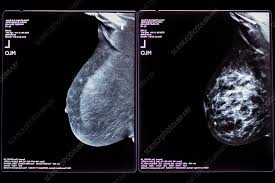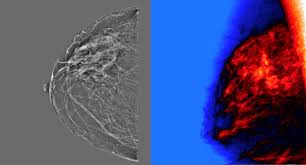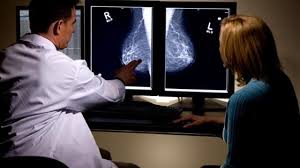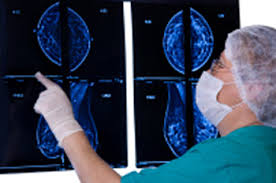DIGITAL MAMMOGRAPHY





DIGITAL MAMMOGRAPHY
Digital mammography is a specialized form of mammography that uses digital receptors and computers instead of x-ray film to help examine breast tissue for breast cancer. The electrical signals can be read on computer screens, permitting more manipulation of images to theoretically allow radiologists to more clearly view the results. Digital mammography may be “spot view”, for breast biopsy, or “full field” (FFDM) for screening.
Mammography is important because in its earliest stages breast cancer may not be palpable; it may be too small to feel as a lump or tissue change. Mammography can help detect these changes two years or more before you would feel them. Physical examination is also important because premenopausal breast tissue is often dense and fibrous, which may decrease the reliability of mammography for young women.
If you notice any change in your breast (such as a lump or other texture change, breast pain, skin dimpling, or nipple discharge), see your doctor. Mammography or other diagnostic tests may be recommended to evaluate the changes taking place. The majority of these changes are due to benign-that is, noncancerous–conditions, but you’ll be glad you checked.
Highlights:
- Optimum dose optimises X-ray dose and image quality.
- Optimum compression determines the optimum degree of compression needed to produce uniform tautness, based on individual breast characteristics.
Patient Benefits:
- It gives very high resolution films so that even the smallest of cancers can be easily detected
- The machine itself decides the optimum compression to be given to the patients. This enables good quality films with least discomfort to the patient.
- There is automatic decompression so that once the exposure is done, the breasts are automatically decompressed. Thus the patient experiences discomfort only for a few seconds.
Age
Recommendation for Mammography: Women at Average Risk for Developing Breast Cancer. Over 50 Years : All women over the age of 50 years should have annual mammography examinations. 40-50 years :The Indian Cancer Society recommends annual mammograms for women in this age group. The National Cancer Institute recommends that these women get a mammogram every 1-2 years. Your physician should offer appropriate guidance on this issue according to your personal medical history.
Under 40 years : Most women under the age of 40 years do not need annual mammograms. However a baseline mammogram may be done at 35 years.
Special Circumstances: Women at Higher than Average Risk Breast changes you (or your physician) may discover :
- a change in breast texture (such as a lump)
- breast pain
- skin dimpling
- nipple discharge
Recommendation : Consult your doctor. A mammogram may be recommended.
You may be at higher risk for breast cancer if :
- you have already had breast cancer, especially before menopause.
- you are genetically susceptible to cancer, i.e. you have close relatives with breast cancer.
- Those taking hormone replacement therapy
- Unmarried women and those without children are also at high risk
Recommendation : Your doctor may recommend that you have mammography examinations more frequently or start at an earlier age than women at average risk. Make sure your physician is aware of any risk factors that apply to you.
What is mammography?
Mammography is x-rays of the breasts so as to enable one to detect early breast cancer
Does mammography itself cause breast cancer because of radiation?
The radiation exposure with mammography is very less. Also if the pros and cons of mammography are weighed, the pros outweigh the cons by far. The radiation effect on the breasts decreases exponentially after 35 years of age. The only precaution to be taken is that the patient should be sure that she is not pregnant.
Does the procedure of mammography cause pain?
With newer equipment very little discomfort is felt by the patient. The patient should preferably come after the period is over, as the likelihood of pain will be the least. However there will be no changes in the findings on mammography during any stage of the menstrual cycle.
What is sono-mammography? Why do mammography when everything is seen on sono-mammography?
Sono-mammography is the ultrasound examination of the breasts. It is usually done as a complementary procedure to mammography. It helps in distinguishing a cystic mass from a solid mass. Cysts are usually benign. Mammography is required as the earliest of cancers are seen only on this modality.
Preparations
- Please do not apply any cream or powder to the breasts on the day of the procedure
- If possible avoid coffee and colas for 2 days prior to the procedure.
- No fasting is required.
- You are advised to come in normal comfortable clothing.
- Carry your previous reports if any.
Breast cancer usually presents itself as a lump. Therefore a patient should regularly do a monthly self-breast examination particularly after the period is over. Sometimes there might be a bloody nipple discharge. Occasionally in 10% of the patients, is there is associated pain.
Contact us
Call Us
0124-4365459
Email Us
krishna.diagnosticsggn@gmail.com
Our Location
Plot no. 384, Main Market, opposite Raj Bhawan, Block C, Sukhrali, Sector 17, Gurugram, Haryana 122001
